An Overview of Thermal Treatment Emissions with a Particular Focus on CO2 Parameter
Abstract
:1. Introduction
- Reducing resource consumption;
- Taking into account the complete life cycle of materials/products;
- Achieving the best environmental outcomes overall;
- Using the expanded producer responsibility system to implement the “polluter pays” idea.
- -
- Prevention;
- -
- Reuse;
- -
- Recycling;
- -
- Recovery (i.e., energy recovery);
- -
- Final disposal in a landfill.
2. Thermal Treatment Approach
- Direct combustion in an incineration plant;
- Gasification;
- Pyrolysis.
- -
- Combustion chamber. The most common combustion technologies for MSW treatment are the moving grate system and the fluidized bed system. The first one (moving grate system) is the most widely used technology on account of its flexibility of operation and reliability resulting from extensive application. The technology consists of a grid, inclined to a horizontal line, which is covered with a waste bed that is several dozen centimeters thick. The grid is made up of a number of “fire bar” components that are arranged to allow the combustion air to pass through and be distributed across the entire waste bed. Both directly inside the combustion chamber and underneath the grid, the combustion air is injected. The residence time of the waste in the combustion chamber (and thus on the grid) is generally between 30 and 60 min (in order to allow for the complete oxidation of the organic substances). With the proper systems, the remaining bottom ash produced by the operation is released from the grid’s final section (water bath accumulation tanks). In accordance with an adequate oxygen content (6–8%) and turbulence, temperatures in the range of 950–1000 °C are thought to be sufficient to ensure the complete oxidation of the organic components.
- ○
- Bottom ash, generally equal to 20% of the waste input to the plant. This type of residue is generally sent to recovery;
- ○
- Fly ash, generally equal to 4–7% of the waste input to the plant. This type of residue, removed through the flue gas depuration line, is a hazardous waste and is generally sent to a landfill for hazardous waste.
- -
- Flue gas depuration line. A thermal treatment plant generates three different outputs: gaseous, liquid, and solid emissions. Before being released into the atmosphere from the chimney, the flue gas must be treated in order to reduce the concentrations of the pollutants generated during the process. The flue gas treatment section is extremely articulated and complex as a result of the increasingly strict regulatory limits placed upon it and of actual technological progress, which in recent years has resulted in the development of sophisticated systems capable of producing emissions much lower than the maximum permitted by legislation.
- ○
- The pollutants present in the flue gas can be grouped into two different types:
- ○
- Macro-pollutants: substances present in the flue gas in concentrations in the order of mg/Nm3, such as PM (particulate matter), sulphur oxides (generally SO2), nitrogen oxide (NOx), carbon monoxide (CO), and halogen acids (generally HCl and HF);
- ○
- Micro-pollutants: substances present in the flue gas in much lower concentrations (in comparison with the concentrations of macro-pollutants), which include both inorganic species, such as heavy metals (Cd, Cr, Hg, Pb, Ni, and so on) and organic species, such as PCDD, PCDF, and PAHs.
- -
- Energy recovery section. Energy recovery from incineration is commonly achieved by capturing the steam emitted when the flue gases are cooled—a process required for their subsequent treatment.
3. Environmental Aspects
3.1. CO2 Emissions
3.1.1. CO2 Emissions from Direct Combustion Incineration Plants
- -
- It was assumed that all the carbon contained in the input waste stream would become carbon dioxide; hence, the CO2 was calculated by the following equation:
- -
- It was assumed that the CO2 avoided was considered in the total energy recovery from the thermal treatment; hence, it was calculated by the following equation:
3.1.2. CO2 Reduction Possibility
4. Conclusions
- From the primary pollutant parameters (dust, NOx, SOx, acid gases, and so on) in comparison with other industrial activities and with other waste management modalities, direct combustion (incineration) presents low emissions (for all the considered parameters).
- From the CO2 parameter, the amounts coming from these kinds of plants are equal to more or less 0.86 tCO2/tMSW and 0.44 tCO2/MWh. These amount (expressed in terms of indexes) are lower than those coming from other kinds of management (for example for the landfill, the index is equal to 3.28 tCO2/MSW).
- There are some technological possibilities to reduce the amount of CO2 generated from these kinds of plants. However, these possibilities are at early stages of implementation, and so the main limitation is that there are no reduction technologies at the industrial scale. Future work is needed in order to improve this aspect.
Author Contributions
Funding
Institutional Review Board Statement
Informed Consent Statement
Data Availability Statement
Conflicts of Interest
References
- Waste Framework Directive (WFD-Directive 2008/98/EC). Available online: https://eur-lex.europa.eu/legal-content/EN/TXT/?uri=celex%3A32008L0098 (accessed on 13 January 2022).
- TUA, Italian Legislative Decree 152/2006. Available online: https://www.parlamento.it/parlam/leggi/deleghe/06152dl.htm (accessed on 13 January 2022).
- Eurostat Statistics Explained. Available online: https://ec.europa.eu/eurostat/statistics-explained/index.php?title=Municipal_waste_statistics (accessed on 17 January 2022).
- CEWEP (Confederation of European Waste-to-Energy Plants). Available online: https://www.cewep.eu/ (accessed on 13 January 2022).
- Arena, U. Process and technological aspects of municipal solid waste gasification. A review. Waste Manag. 2012, 32, 625–639. [Google Scholar] [CrossRef] [PubMed]
- Kaza, S.; Yao, L.; Bhada-Tata, P.; Van Woerden, F. What a Waste 2.0: A Global Snapshot of Solid Waste Management to 2050; World Bank Publications: Washington, DC, USA, 2018; ISBN 1464813477. [Google Scholar]
- European Commission. Communication from the Commission to the European parliament, the council, the European economic and social committee and the committee of the regions. The role of waste-to-energy in the circular economy; European Commission: Brussels, Belgium; Luxembourg, 2017. [Google Scholar]
- Shareefdeen, Z.; Mishu, A.A. Air emissions in waste to energy (W2E) plants. Clean Technol. Environ. Policy 2021, 1–10. [Google Scholar] [CrossRef]
- Panepinto, D.; Zanetti, M. Technical and Environmental Comparison among Different Municipal Solid Waste Management Scenarios. Sustainability 2021, 13, 3167. [Google Scholar] [CrossRef]
- Sabbas, T.; Polettini, A.; Pomi, R.; Astrup, T.; Hjelmar, O.; Mostbauer, P.; Cappai, G.; Magel, G.; Salhofer, S.; Speiser, C. Management of municipal solid waste incineration residues. Waste Manag. 2003, 23, 61–88. [Google Scholar] [CrossRef] [PubMed]
- Alamu, S.O.; Wemida, A.; Tsegaye, T.; Oguntimein, G. Sustainability Assessment of Municipal Solid Waste in Baltimore USA. Sustainability 2021, 13, 1915. [Google Scholar] [CrossRef]
- Bianco, I.; Panepinto, D.; Zanetti, M. End-of-Life Tyres: Comparative Life Cycle Assessment of Treatment Scenarios. Appl. Sci. 2021, 11, 3599. [Google Scholar] [CrossRef]
- Lee, Y.-J.; Go, Y.-J.; Yoo, H.-N.; Choi, G.-G.; Park, H.-Y.; Kang, J.-G.; Lee, W.-S.; Shin, S.-K. Measurement and analysis of biomass content using gas emissions from solid refuse fuel incineration. Waste Manag. 2021, 120, 392–399. [Google Scholar] [CrossRef]
- Sarc, R.; Lorber, K.E. Production, quality and quality assurance of Refuse Derived Fuels (RDFs). Waste Manag. 2013, 33, 1825–1834. [Google Scholar] [CrossRef]
- Yoneda, K.; Ikeguchi, T.; Yagi, Y.; Tamade, Y.; Omori, K. A research on dioxin generation from the industrial waste incineration. Chemosphere 2002, 46, 1309–1319. [Google Scholar] [CrossRef]
- Abaecherli, M.L.; Capón-García, E.; Szijjarto, A.; Hungerbühler, K. Optimized energy use through systematic short-term management of industrial waste incineration. Comput. Chem. Eng. 2017, 104, 241–258. [Google Scholar] [CrossRef]
- Oliveira, M.C.; Magrini, A. Life Cycle Assessment of Lubricant Oil Plastic Containers in Brazil. Sustainability 2017, 9, 576. [Google Scholar] [CrossRef] [Green Version]
- Istrate, I.-R.; García-Gusano, D.; Iribarren, D.; Dufour, J. Long-term opportunities for electricity production through municipal solid waste incineration when internalising external costs. J. Clean. Prod. 2019, 215, 870–877. [Google Scholar] [CrossRef]
- Dong, J.; Tang, Y.; Nzihou, A.; Chi, Y.; Weiss-Hortala, E.; Ni, M.; Zhou, Z. Comparison of waste-to-energy technologies of gasification and incineration using life cycle assessment: Case studies in Finland, France and China. J. Clean. Prod. 2018, 203, 287–300. [Google Scholar] [CrossRef]
- Jegoux, M.; Modrego, J.; Cren, J.; Diethelm, S. Deliverable Report of the Horizon 2020 Project “Efficient Co-Electrolyser for Efficient Renewable Energy Storage”; European Commission: Lyngby, Denmark, 2019. [Google Scholar]
- Ahmad, A.A.; Zawawi, N.A.; Kasim, F.H.; Inayat, A.; Khasri, A. Assessing the gasification performance of biomass: A review on biomass gasification process conditions, optimization and economic evaluation. Renew. Sustain. Energy Rev. 2016, 53, 1333–1347. [Google Scholar] [CrossRef]
- Ansari, S.H.; Ahmed, A.; Razzaq, A.; Hildebrandt, D.; Liu, X.; Park, Y.-K. Incorporation of solar-thermal energy into a gasification process to co-produce bio-fertilizer and power. Environ. Pollut. 2020, 266, 115103. [Google Scholar] [CrossRef]
- Amaya-Santos, G.; Chari, S.; Sebastiani, A.; Grimaldi, F.; Lettieri, P.; Materazzi, M. Biohydrogen: A life cycle assessment and comparison with alternative low-carbon production routes in UK. J. Clean. Prod. 2021, 319, 128886. [Google Scholar] [CrossRef]
- Hanif, M.A.; Ibrahim, N.; Jalil, A.A. Sulfur dioxide removal: An overview of regenerative flue gas desulfurization and factors affecting desulfurization capacity and sorbent regeneration. Environ. Sci. Pollut. Res. 2020, 27, 27515–27540. [Google Scholar] [CrossRef]
- Mortson, M.; Telesz, R.W. Flue gas desulfurization using recycled sodium bicarbonate. In Proceedings of the The US EPA/DOE/EPRI Combined Power Plant Air Pollutant Control Symposium: “The Mega Symposium”, Chicago, IL, USA, 20–23 August 2001. [Google Scholar]
- Fawzy, S.; Osman, A.I.; Doran, J.; Rooney, D.W. Strategies for mitigation of climate change: A review. Environ. Chem. Lett. 2020, 18, 2069–2094. [Google Scholar] [CrossRef]
- Crivello, S. Political ecologies of a waste incinerator in Turin, Italy: Capital circulation and the production of urban natures. Cities 2015, 48, 109–115. [Google Scholar] [CrossRef]
- Ferdan, T.; Pavlas, M.; Nevrlý, V.; Šomplák, R.; Stehlík, P. Greenhouse gas emissions from thermal treatment of non-recyclable municipal waste. Front. Chem. Sci. Eng. 2018, 12, 815–831. [Google Scholar] [CrossRef]
- Panepinto, D.; Genon, G. Carbon dioxide balance and cost analysis for different solid waste management scenarios. Waste Biomass Valorization 2012, 3, 249–257. [Google Scholar] [CrossRef]
- Bai, Z.; Liu, Q.; Gong, L.; Lei, J. Investigation of a solar-biomass gasification system with the production of methanol and electricity: Thermodynamic, economic and off-design operation. Appl. Energy 2019, 243, 91–101. [Google Scholar] [CrossRef]
- Fushimi, C. Valorization of Biomass Power Generation System: Noble Use of Combustion and Integration with Energy Storage. Energy Fuels 2021, 35, 3715–3730. [Google Scholar] [CrossRef]
- Teh, J.S.; Teoh, Y.H.; How, H.G.; Le, T.D.; Jason, Y.J.J.; Nguyen, H.T.; Loo, D.L. The Potential of Sustainable Biomass Producer Gas as a Waste-to-Energy Alternative in Malaysia. Sustainability 2021, 13, 3877. [Google Scholar] [CrossRef]
- Passarini, F.; Nicoletti, M.; Ciacci, L.; Vassura, I.; Morselli, L. Environmental impact assessment of a WtE plant after structural upgrade measures. Waste Manag. 2014, 34, 753–762. [Google Scholar] [CrossRef] [PubMed] [Green Version]
- Lindberg, D.; Molin, C.; Hupa, M. Thermal treatment of solid residues from WtE units: A review. Waste Manag. 2015, 37, 88–94. [Google Scholar] [CrossRef]
- Lombardi, L.; Carnevale, E.; Corti, A. A review of technologies and performances of thermal treatment systems for energy recovery from waste. Waste Manag. 2021, 37, 26–44. [Google Scholar] [CrossRef]
- Utilitalia. White Paper on Municipal Waste Incineration; Utilitalia: Rome, Italy, 2020; p. 96. [Google Scholar]
- ENI Scuola Energia e Ambiente. Available online: https://www.eniscuola.net/wp-content/uploads/2013/02/pdf_rifiuti-1.pdf (accessed on 13 January 2022).
- European Commission. Best Available Techniques (BAT) Reference Document for Waste Incineration. 2019. Available online: https://op.europa.eu/en/publication-detail/-/publication/075477b7-329a-11ea-ba6e-01aa75ed71a1/language-en (accessed on 13 January 2022).
- Panepinto, D.; Zanetti, M.C. Municipal solid waste incineration plant: A multi-step approach to the evaluation of an energy-recovery configuration. Waste Manage. 2018, 73, 332–341. [Google Scholar] [CrossRef]
- Zhang, G.; Deng, N.; Mou, H.; Zhang, Z.G.; Chen, X. The impact of the policy and behavior of public participation on environmental governance performance: Empirical analysis based on provincial panel data in China. Energy Policy 2019, 129, 1347–1354. [Google Scholar] [CrossRef]
- Neves, S.A.; Marques, A.C.; Patrìcio, M. Determination of CO2 emissions in uropean Union Countries: Does enrironmental regulation reduce environmental pollution? Econ. Anal. Policy 2020, 68, 114–125. [Google Scholar] [CrossRef]
- Yirong, Q. Does environmental policy stringency reduce CO2 emissions? Evidence from high-polluted economie. J. Clean. Prod. 2022, 341, 130648. [Google Scholar] [CrossRef]
- Panepinto, D.; Riggio, V.A.; Zanetti, M.C. Analysis of the emergent climate change mitigation technologies. Int. J. Environ. Res. Public Health 2021, 18, 6767. [Google Scholar] [CrossRef]
- Magaril, E.; Magaril, R.; Panepinto, D.; Genon, G.; Ravina, M.; Trushkova, L.; Zanetti, M.C. Production and utilization of energy and climate adaptation: Global tasks and local routes. Int. J. Sustain. Dev. Plan. 2017, 12, 1326–1337. [Google Scholar] [CrossRef] [Green Version]
- Ben-Mansour, R.; Habib, M.A.; Bamidele, O.E.; Basha, M.; Qasem, N.A.A.; Peedikakkal, A.; Laoui, T.; Ali, M. Carbon Capture by Physical Adsorption: Materials, Experimental Investigations and Numerical Modeling and Simulations-A Review. Appl. Energy 2016, 161, 225–255. [Google Scholar] [CrossRef]
- Zhao, R.; Liu, L.; Zhao, L.; Deng, S.; Li, S.; Zhang, Y. A Comprehensive Performance Evaluation of Temperature Swing Adsorption for Post-Combustion Carbon Dioxide Capture. Renew. Sustain. Energy Rev. 2019, 114, 109285. [Google Scholar] [CrossRef]
- Karousos, D.S.; Sapalidis, A.A.; Kouvelos, E.P.; Romanos, G.E.; Kanellopoulos, N.K. A Study on Natural Clinoptilolite for CO2 /N2 Gas Separation. Sep. Sci. Technol. 2016, 51, 83–95. [Google Scholar] [CrossRef]
- Lee, K.-M.; Lim, Y.-H.; Jo, Y.-M. Evaluation of Moisture Effect on Low-Level CO2 Adsorption by Ion-Exchanged Zeolite. Environ. Technol. 2012, 33, 77–84. [Google Scholar] [CrossRef]
- Bahamon, D.; Vega, L.F. Systematic Evaluation of Materials for Post-Combustion CO2 Capture in a Temperature Swing Adsorption Process. Chem. Eng. J. 2016, 284, 438–447. [Google Scholar] [CrossRef]
- Divekar, S.; Dasgupta, S.; Arya, A.; Gupta, P.; Singh, S.; Nanoti, A. Improved CO2 Recovery from Flue Gas by Layered Bed Vacuum Swing Adsorption (VSA). Sep. Purif. Technol. 2020, 234, 115594. [Google Scholar] [CrossRef]
- Panepinto, D.; Viggiano, F.; Genon, G. Analysis of the environmental impact of a biomass plant for the production of bioenergy. Renew. Sustain. Rev. 2015, 51, 634–647. [Google Scholar]
- Christensen, T.H.; Damgaard, A.; Levis, J.; Zhao, Y.; Björklund, A.; Arena, U.; Barlaz, M.A.; Starostina, V.; Boldrin, A.; Astrup, T.F.; et al. Application of LCA modelling in integrated waste management. Waste Manag. 2020, 118, 313–322. [Google Scholar] [CrossRef] [PubMed]
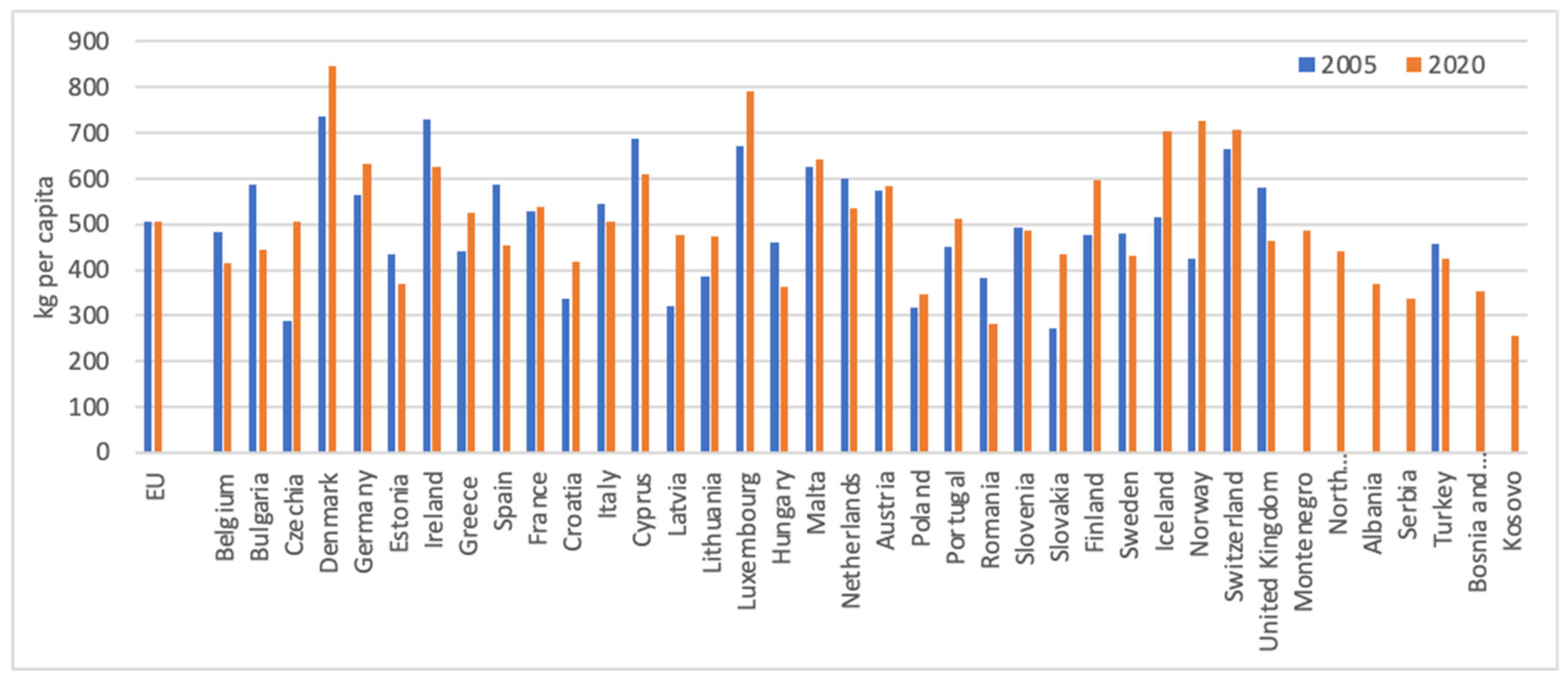
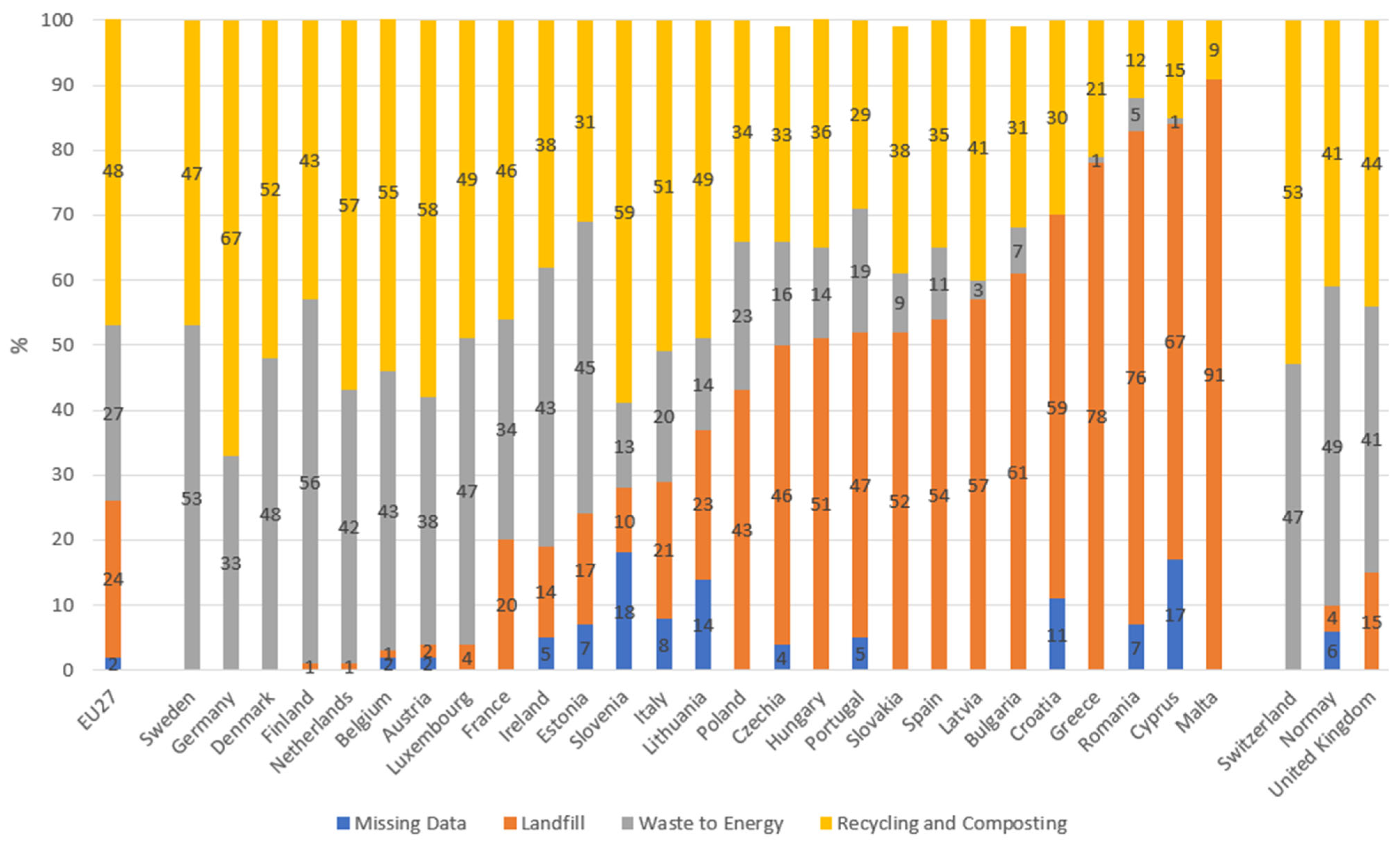
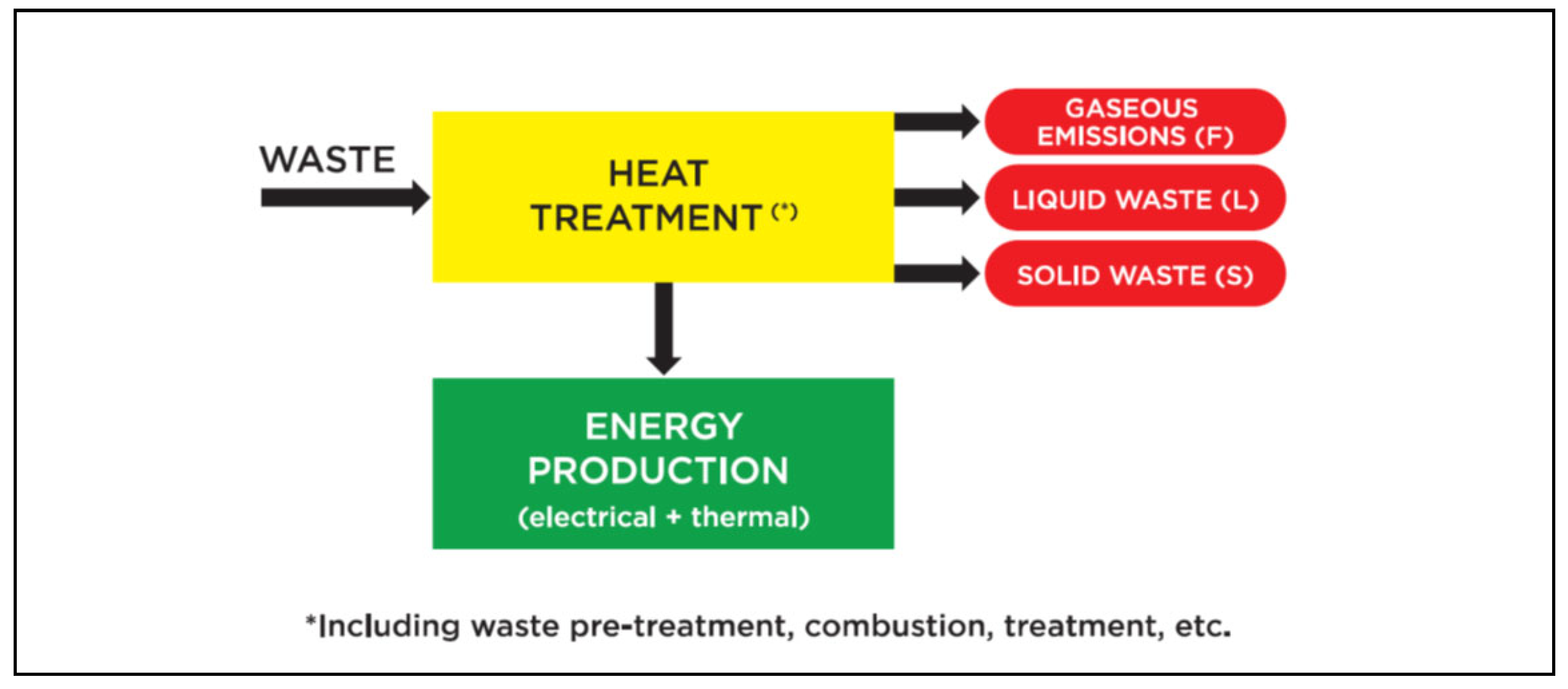
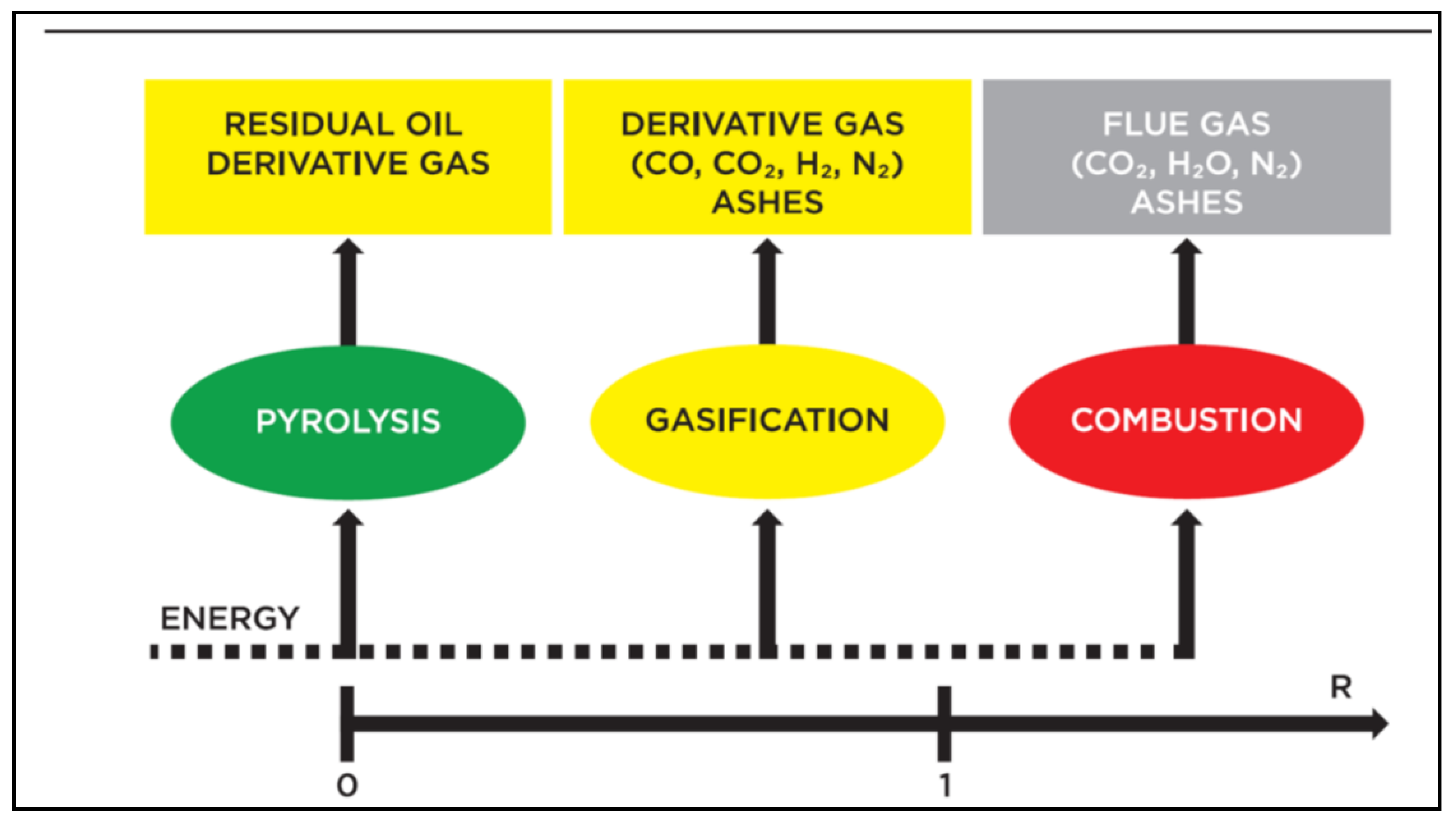
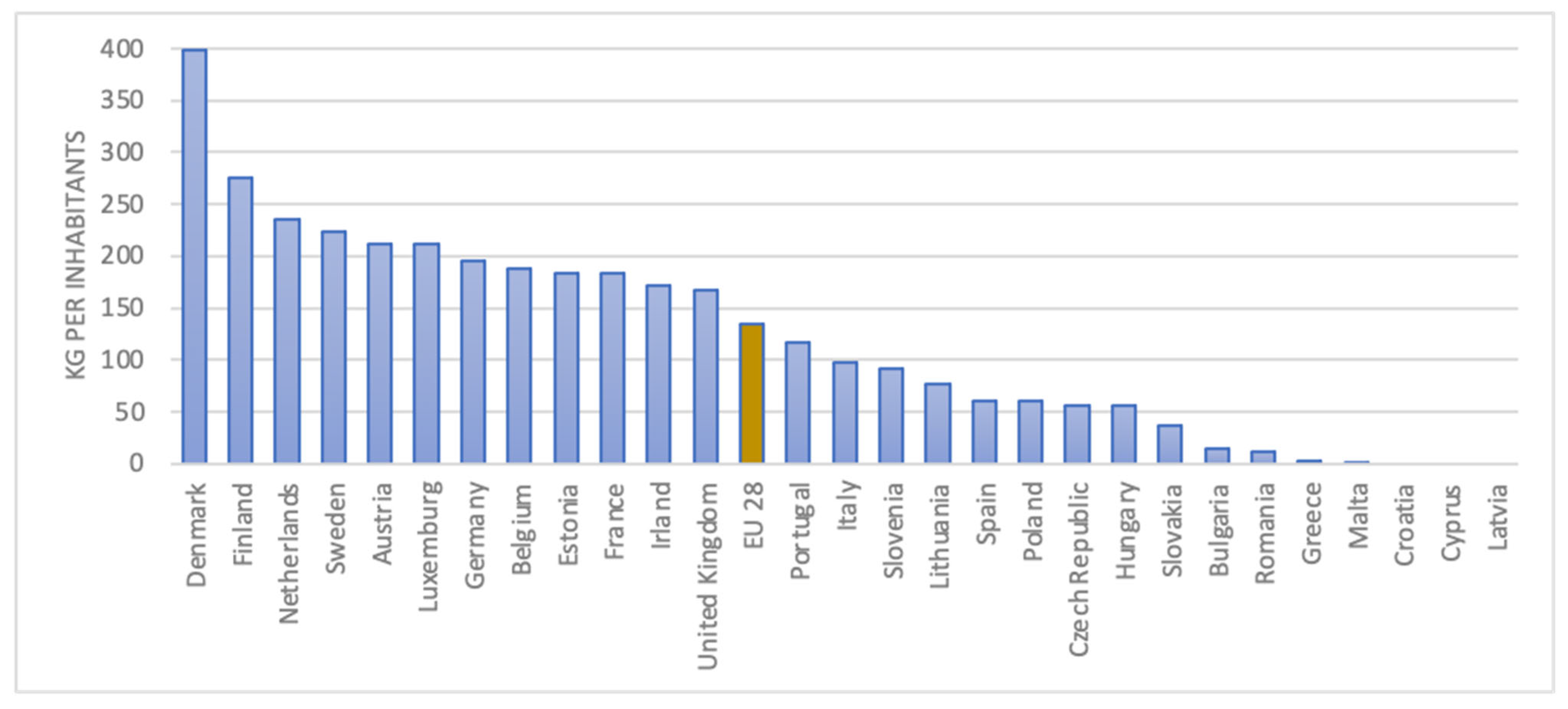

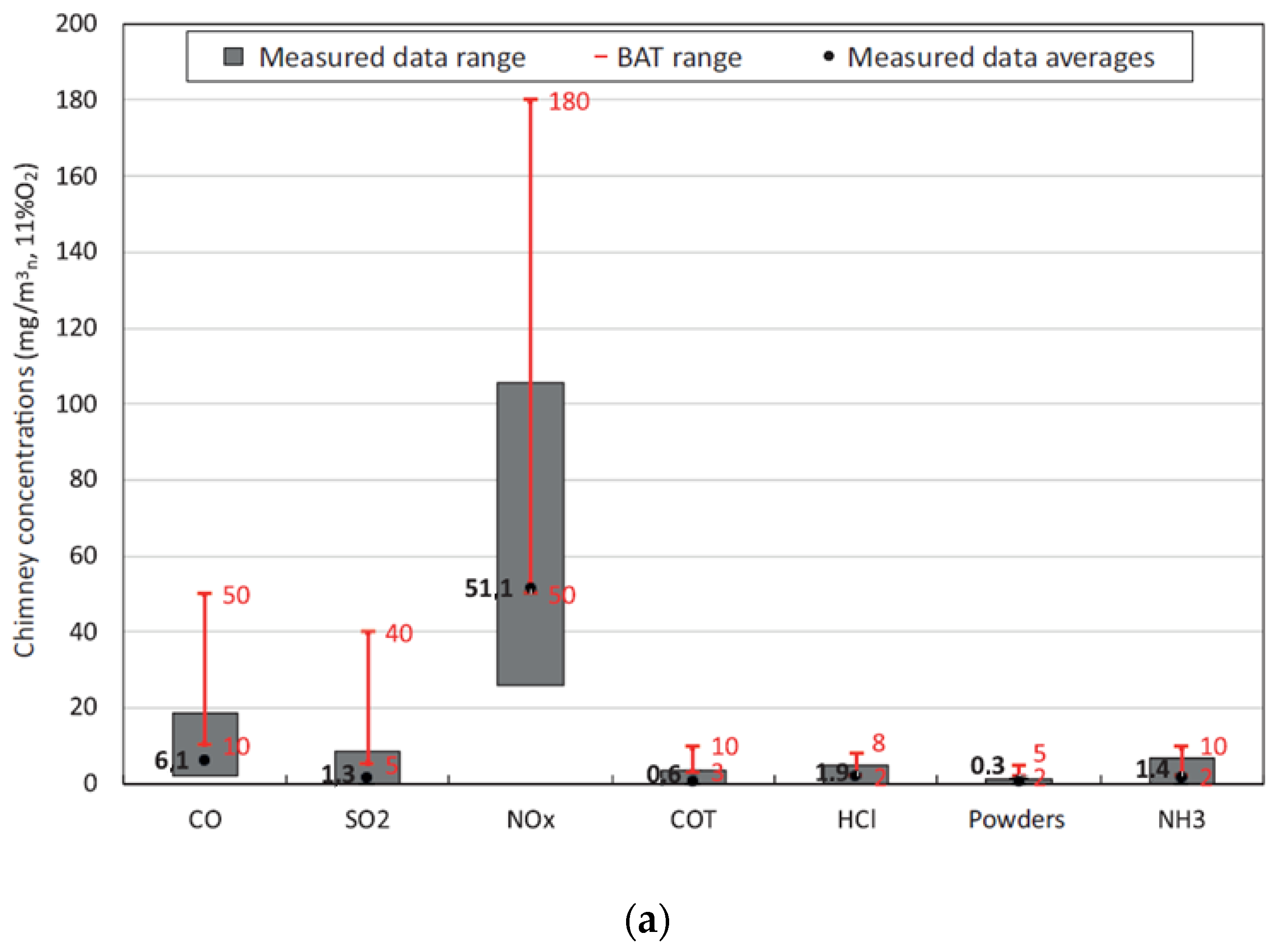
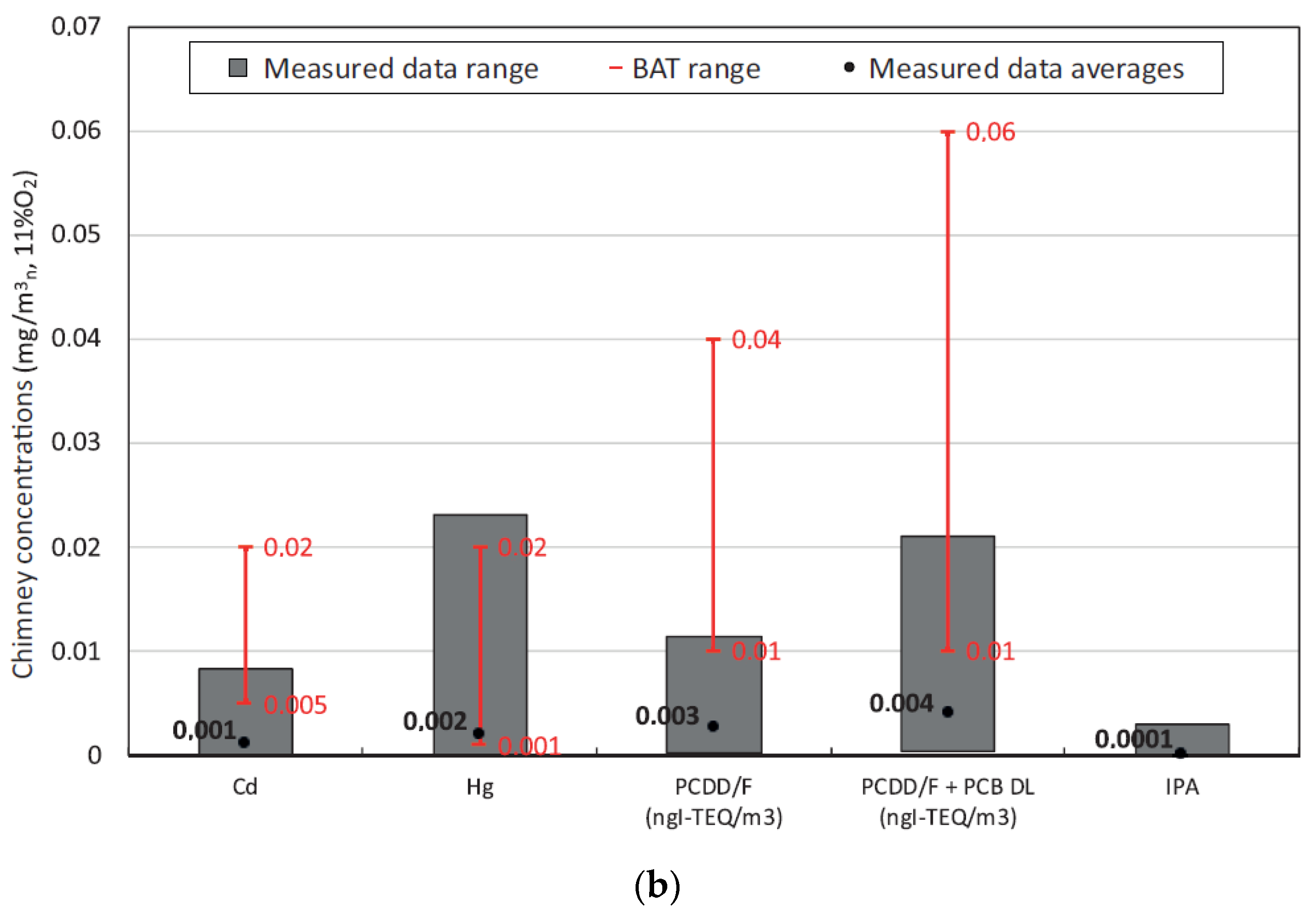
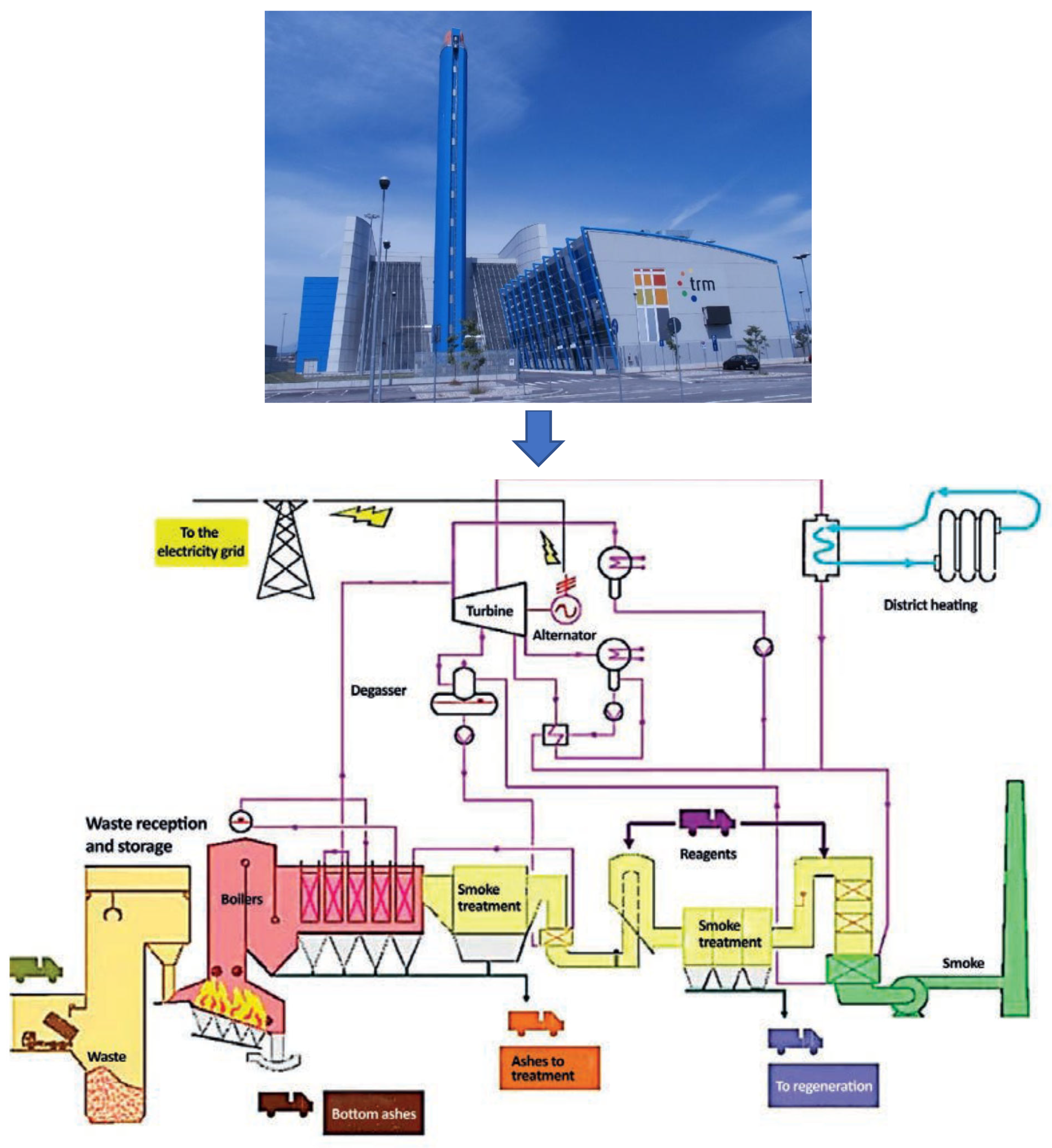
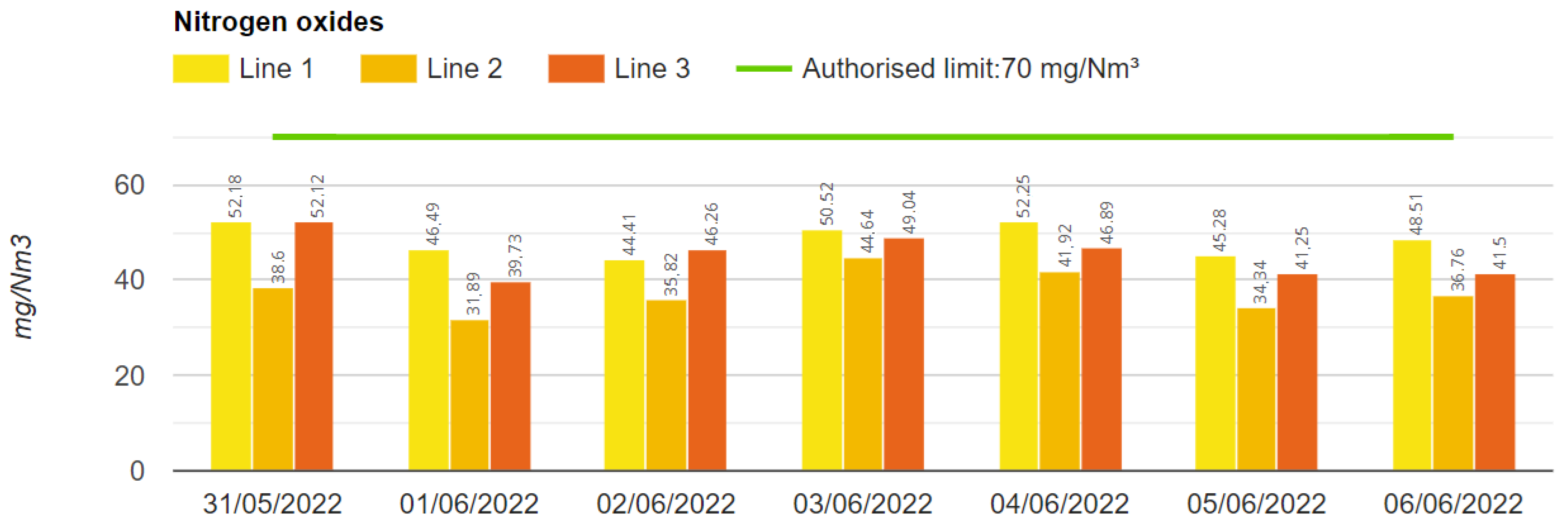
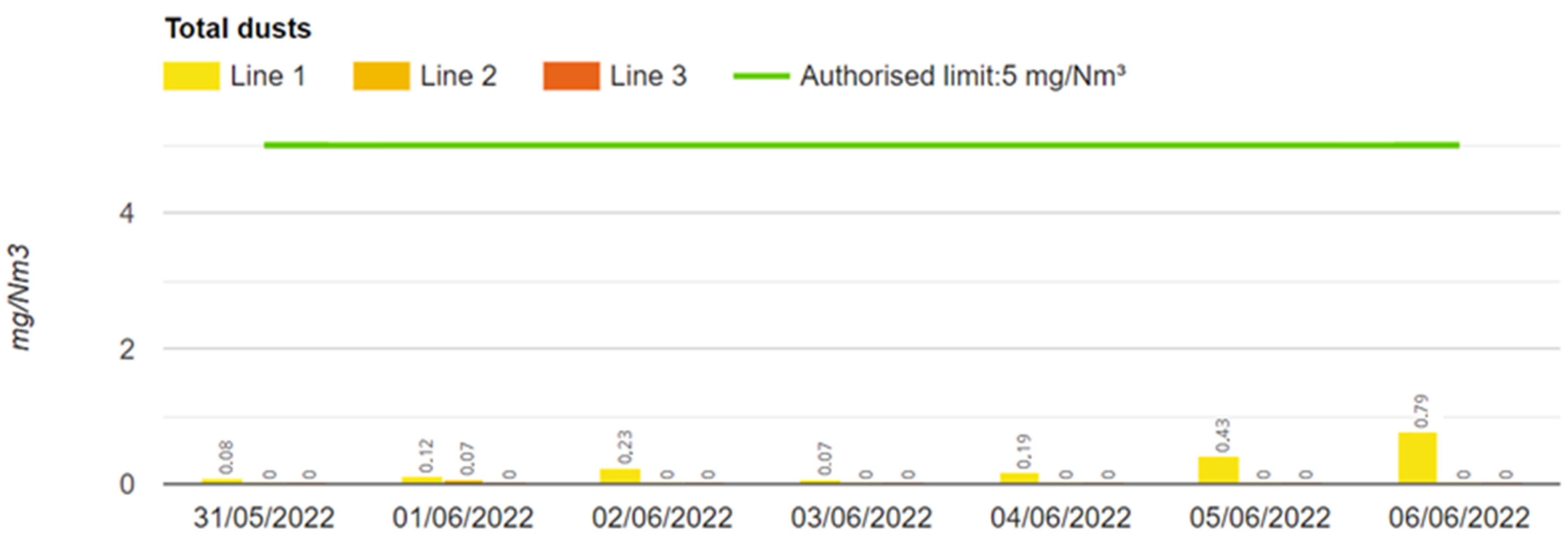
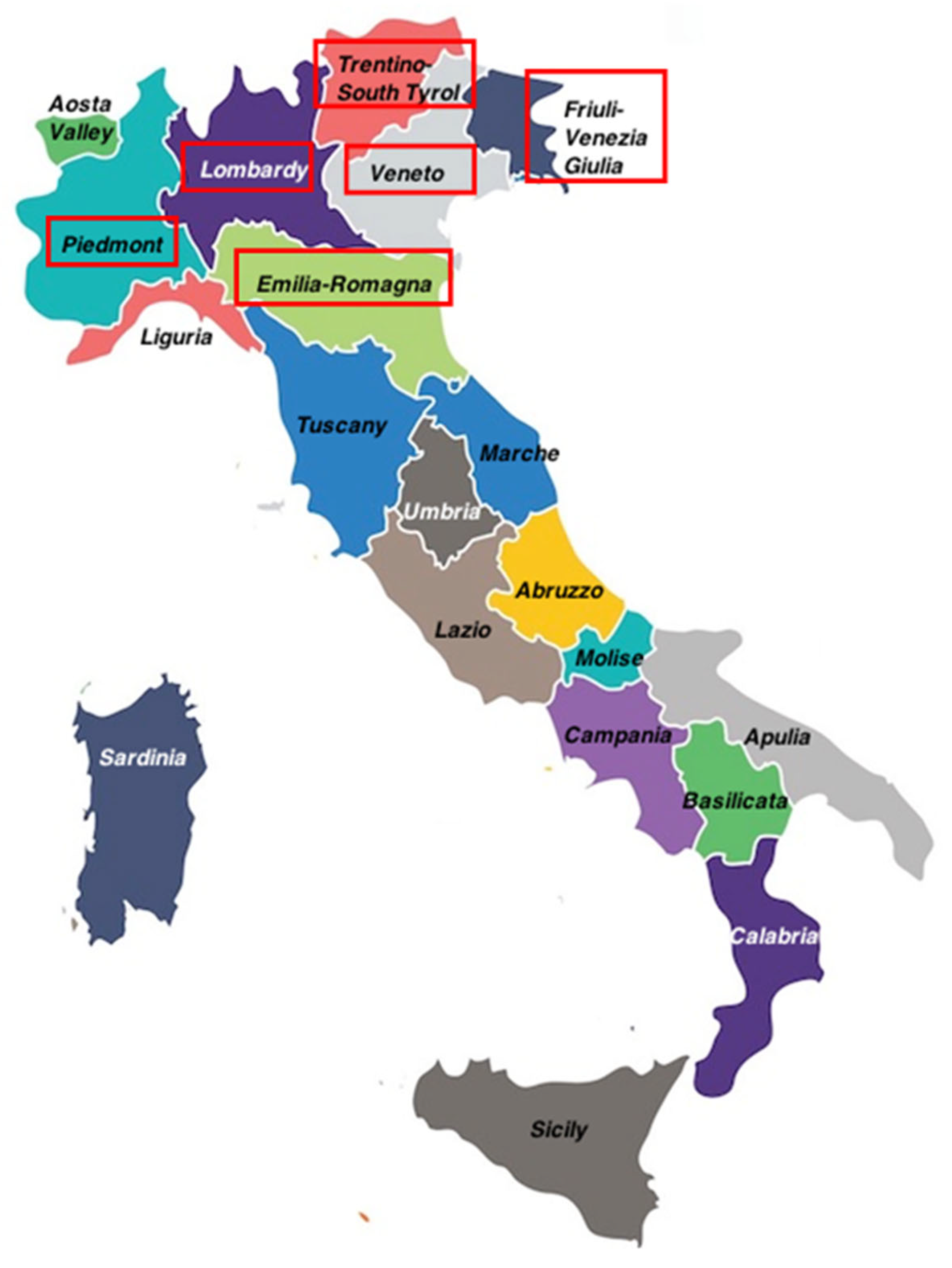
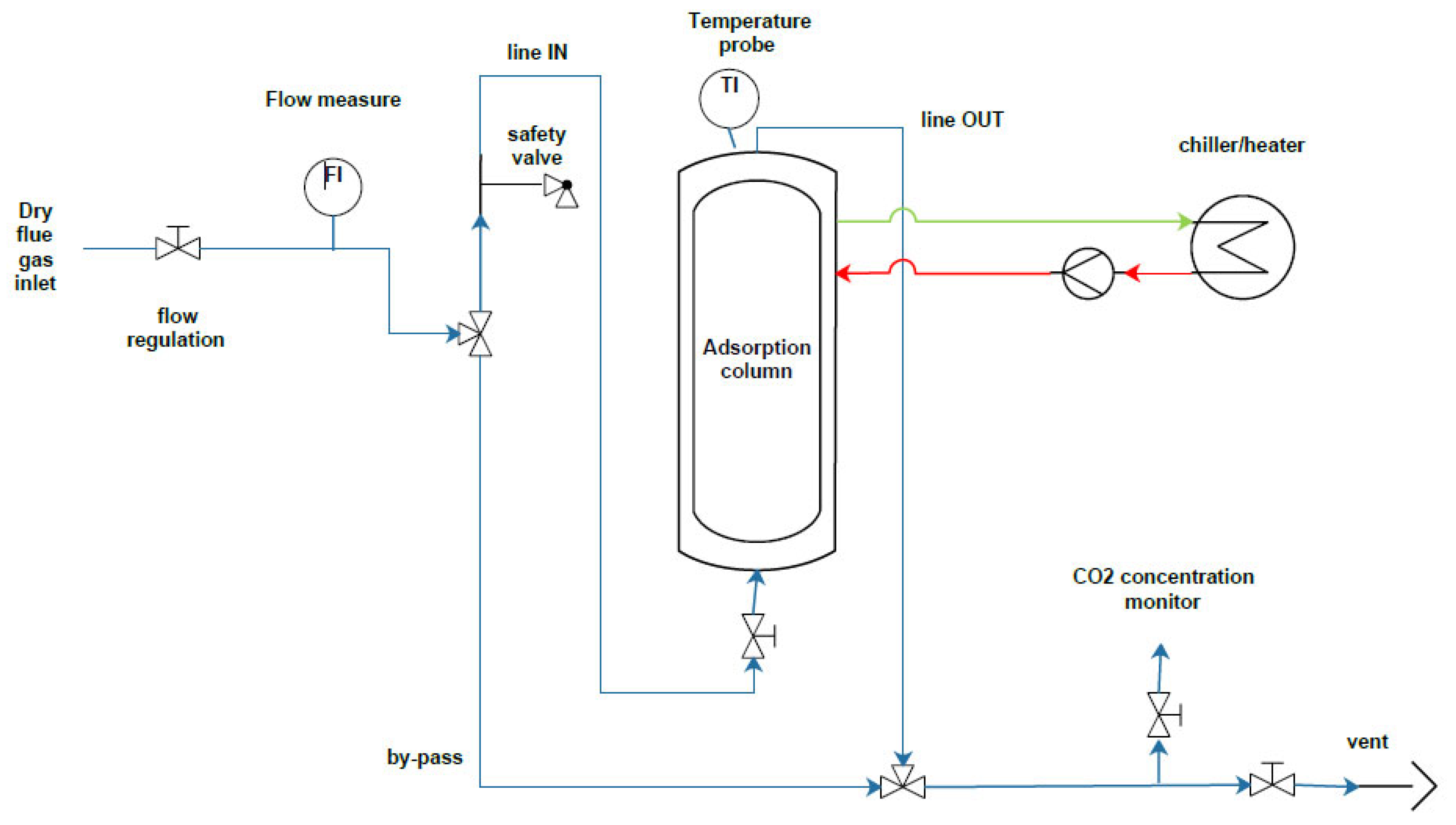
| 2000 | Residential and Commercial Combustion | Energy Production and Distribution | Combustion in Industry | Production Processes | Road Transportation | Waste Incineration |
|---|---|---|---|---|---|---|
| SO2 | 3.5% | 66.4% | 14.2% | 3.4% | 1.6% | 1.3% |
| NOx | 11.7% | 11.6% | 12.2% | 0.4% | 50.6% | 0.16% |
| PM10 | 35.0% | 8.1% | 8.6% | 7.2% | 21.2% | 0.01% |
| CO | 22.1% | 1.2% | 6.7% | 2.6% | 63.5% | 0.002% |
| Cd | 25.0% | 0.0% | 62.5% | 12.5% | 0.0% | 2% |
| Hg | 7.7% | 46.2% | 23.1% | 23.1% | 0.0% | 1% |
| Pb | 2.7% | 0.5% | 16.0% | 6.9% | 72.5% | 0.3% |
| PCDD/F | 41.7% | 2.2% | 22.0% | 29.9% | 4.2% | 5.3% |
| PAHs | 79.6% | 4.0% | 0.0% | 12.6% | 3.3% | 0.1% |
| 2018 | Residential and Commercial Combustion | Energy Production and Distribution | Combustion in Industry | Production Processes | Road Transportation | Waste Incineration |
| SO2 | 9.4% | 33.3% | 24.0% | 12.4% | 0.4% | 1.2% |
| NOx | 13.0% | 7.0% | 9.4% | 0.8% | 43.5% | 0.8% |
| PM10 | 53.8% | 1.0% | 4.7% | 9.3% | 11.8% | 0.02% |
| CO | 61.9% | 1.9% | 4.1% | 3.6% | 19.9% | 0.04% |
| Cd | 9.4% | 3.3% | 38.1% | 29.1% | 7.7% | 1.2% |
| Hg | 7.0% | 19.3% | 27.4% | 43.0% | 2.6% | 2.6% |
| Pb | 6.8% | 1.1% | 44.8% | 40.6% | 5.1% | 2.7% |
| PCDD/F | 37.5% | 1.7% | 20.2% | 32.1% | 3.8% | 0.2% |
| PAHs | 78.1% | 0.7% | 0.8% | 13.9% | 3.8% | 0.007% |
| Piedmont | Lombardy | Trentino Alto Adige | Veneto | Friuli Venezia Giulia | Emilia Romagna | |
|---|---|---|---|---|---|---|
| Treated wastes (t/y) | 560,000 | 2,400,000 | 130,000 | 240,000 | 147,000 | 1,100,000 |
| Produced energy (MWh) | 1,443,750 | 4,568,675 | 255,244 | 519,452 | 241,500 | 1,991,139 |
| Produced CO2 (t/y) | 924,000 | 3,792,000 | 209,300 | 379,200 | 236,670 | 1,573,000 |
| tCO2/t wastes | 1.65 | 1.58 | 1.61 | 1.58 | 1.61 | 1.43 |
| tCO2/t MWh | 0.64 | 0.83 | 0.82 | 0.73 | 0.98 | 0.79 |
| Avoided CO2 (t/y) | 518,000 | 1,600,000 | 90,000 | 185,000 | 86,000 | 707,000 |
| tCO2/t wastes | 0.73 | 0.91 | 0.92 | 0.81 | 1.02 | 0.79 |
| tCO2/t MWh | 0.28 | 0.48 | 0.47 | 0.37 | 0.62 | 0.43 |
Publisher’s Note: MDPI stays neutral with regard to jurisdictional claims in published maps and institutional affiliations. |
© 2022 by the authors. Licensee MDPI, Basel, Switzerland. This article is an open access article distributed under the terms and conditions of the Creative Commons Attribution (CC BY) license (https://creativecommons.org/licenses/by/4.0/).
Share and Cite
Panepinto, D.; Ravina, M.; Zanetti, M. An Overview of Thermal Treatment Emissions with a Particular Focus on CO2 Parameter. Sustainability 2022, 14, 15852. https://doi.org/10.3390/su142315852
Panepinto D, Ravina M, Zanetti M. An Overview of Thermal Treatment Emissions with a Particular Focus on CO2 Parameter. Sustainability. 2022; 14(23):15852. https://doi.org/10.3390/su142315852
Chicago/Turabian StylePanepinto, Deborah, Marco Ravina, and Mariachiara Zanetti. 2022. "An Overview of Thermal Treatment Emissions with a Particular Focus on CO2 Parameter" Sustainability 14, no. 23: 15852. https://doi.org/10.3390/su142315852
APA StylePanepinto, D., Ravina, M., & Zanetti, M. (2022). An Overview of Thermal Treatment Emissions with a Particular Focus on CO2 Parameter. Sustainability, 14(23), 15852. https://doi.org/10.3390/su142315852









